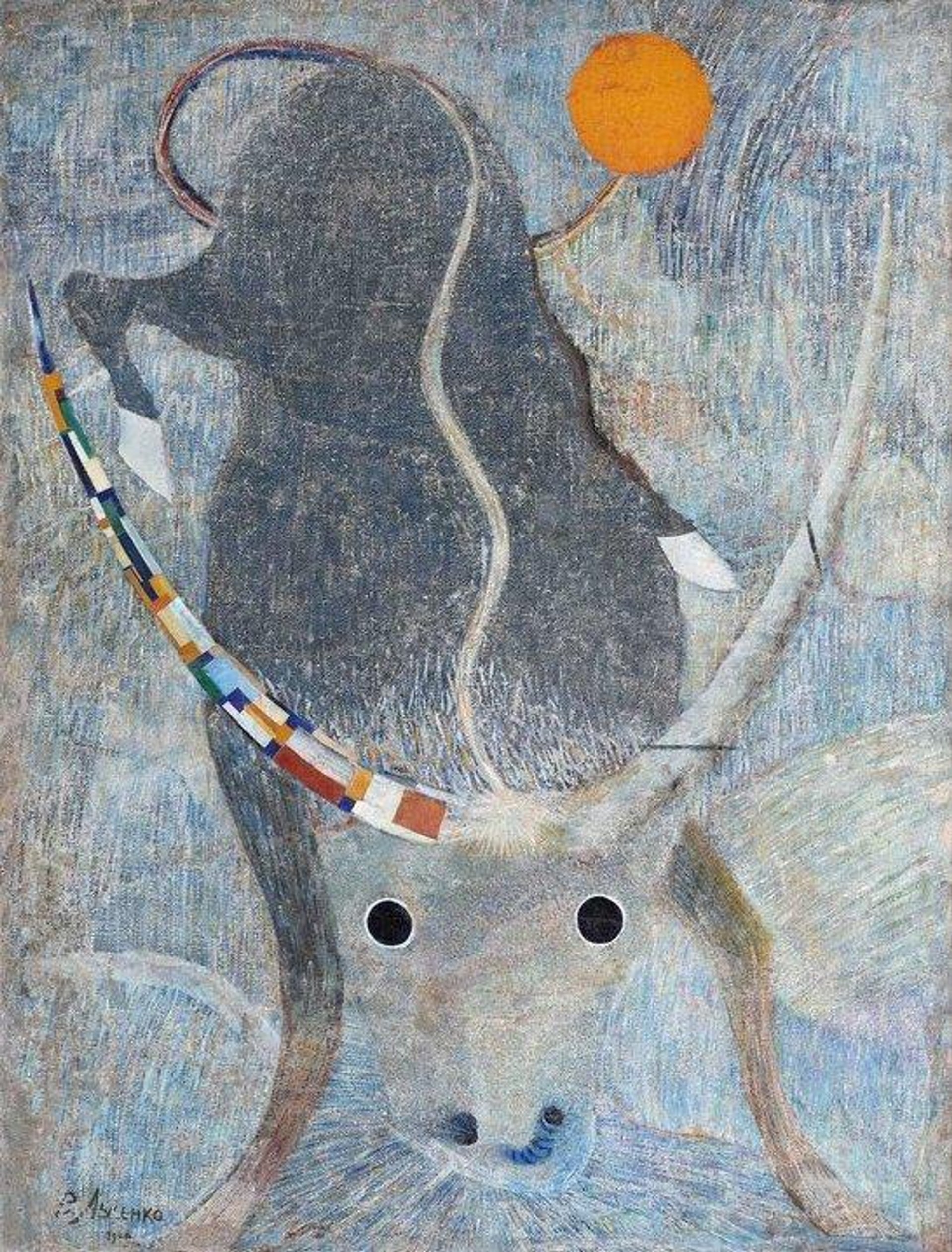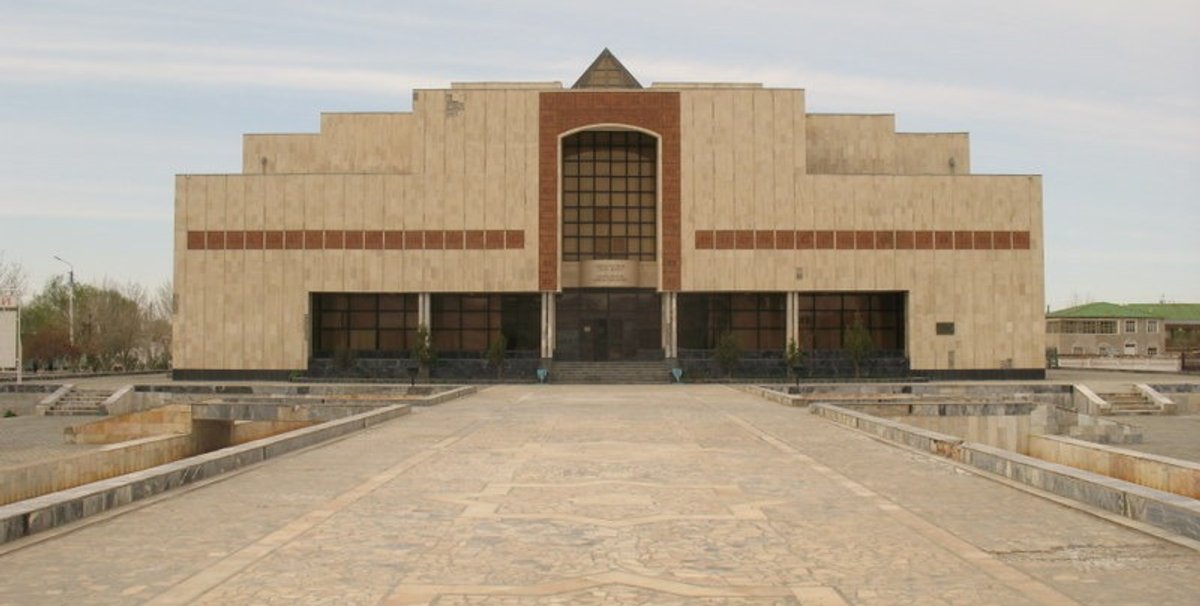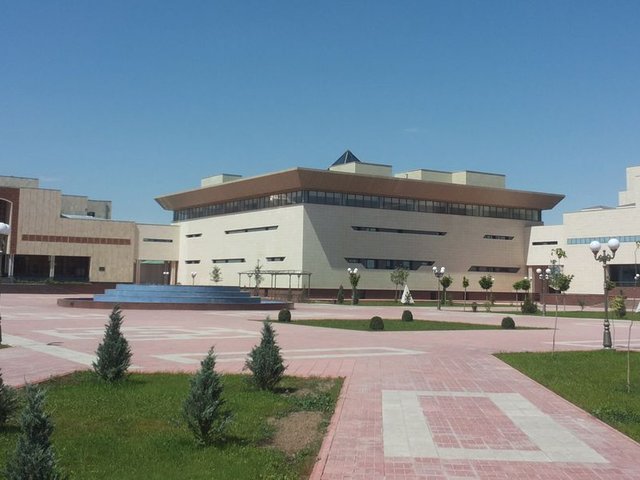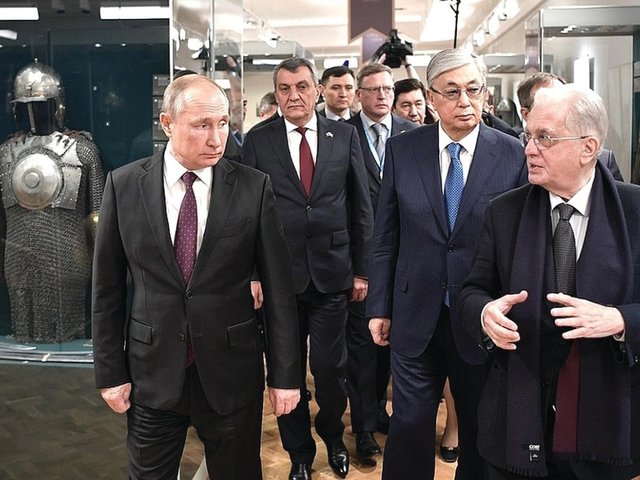Treasures from the “Louvre of the Steppes”—the I.V. Savitsky Karakalpak State Art Museum in Nukus, Uzbekistan, one of the world’s most remote fine arts museums—are now on view in Moscow. Among the first visitors to the exhibition at the State Pushkin Museum of Fine Arts (until 10 May) were the Russian President Vladimir Putin and the newly installed Uzbek President Shavkat Mirziyoyev, who made his first state visit to Moscow last week after coming to power last year.
The Nukus museum’s founder, Igor Savitsky, was an artist and collector born in Kiev in 1915, who ended up in the Karakalpakstan region of Uzbekistan with an archaeological expedition in 1950. He turned a passion for collecting, and a desire to save avant-garde works banned as “decadent bourgeois art” by the Stalinist regime, into a museum quite literally in the middle of nowhere. Some of the artists whose work he saved had been sent to Soviet Gulag prison camps, so Savitsky became known as the “Schindler of Soviet art”. His story was depicted in the prize-winning 2010 documentary Desert of Forbidden Art.
A centerpiece of the collection, and de facto mascot for the museum, is the painting The Bull (also known as Fascism is Advancing) by the obscure avant-garde artist Vladimir Lysenko (alternatively called Vasily or Yevgeny). During an inspection of the museum, officials deemed the work to be anti-Soviet and ordered it be taken down. Savitsky obeyed—but put it back up as soon as they left. It is being shown outside of Nukus for the first time, along with more than 250 works from the 100,000-strong collection of fine art, decorative objects and archaeological artefacts that are rarely loaned by the museum.

The Uzbek museum has faced further struggles over the years. Its long-time director Marinika Babanazarova, who took up the mantle after Savitsky died in 1984, was forced out in 2015, accused of forging some of the museum’s artworks and selling the originals, although evidence of these claims was never given. Her many supporters said the charges were baseless, and feared that the remote museum’s collection, most of which has been kept in storage, would be quietly plundered. There was also speculation that her ambitious plans for an expansion fell afoul of authorities.
The new director Gulbakhar Izentayeva, who was educated in the US and chaired the Karakalpak Branch of Uzbekistan’s Academy of Art, was in Moscow for the opening. Izentayeva said the museum’s modernised home would be fully operational in the coming months. “Two big buildings were built last year, and we are expecting to move in and create a bigger exhibition [of the collection],” she said. One building is an exhibition hall, and the other is storage. Uzbekistan’s culture minister, Mahmud Muratov, said the Savitsky museum will now have 30,000 sq m of space.
Russia has been showing an active interest in the fate of the museum. The Pushkin Museum’s director, Marina Loshak, visited Nukus in February to choose works for the show. She said the Savitsky museum “is in need of huge research efforts by the international museum community,” according to a statement released on the Uzbekistan Ministry of Culture’s website.
Nukus is also being promoted as an accessible art tourism destination. There are now three direct flights a week from Moscow to Nukus. The State Tretyakov Gallery and the private U-ART Foundation also announced the winners last month of a new travel grant for experts from the museum to study Russian art in foreign collections, and one of them will be studying the Savitsky




